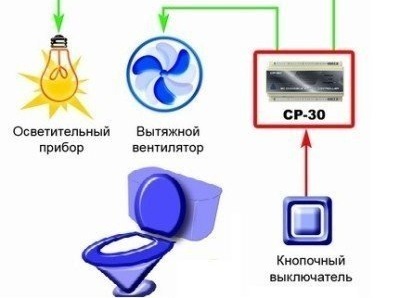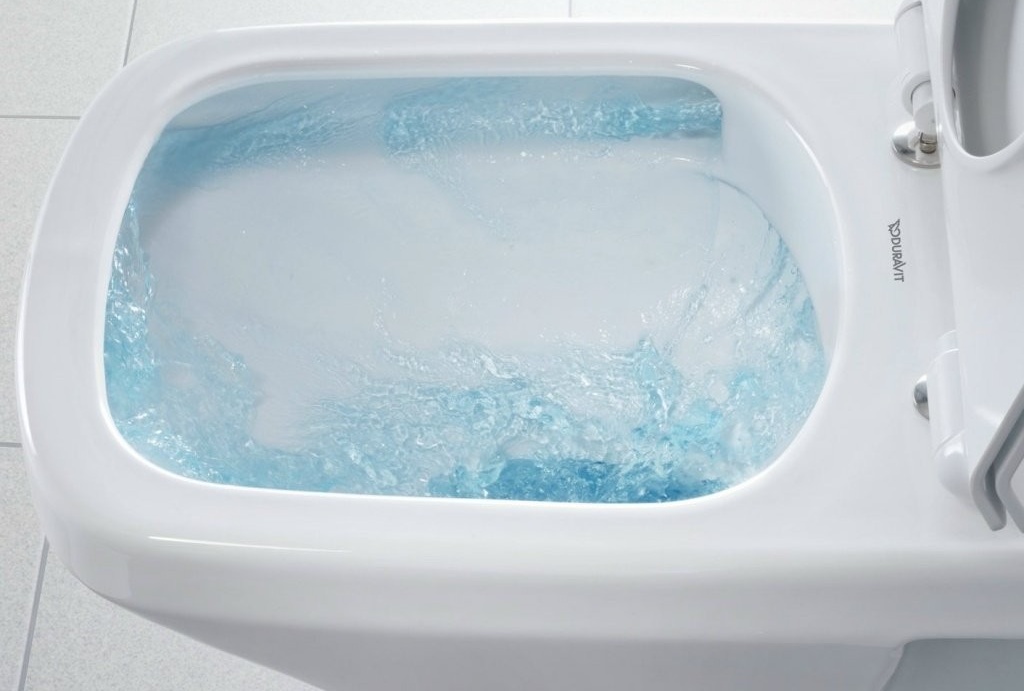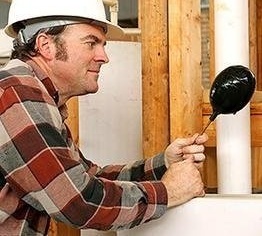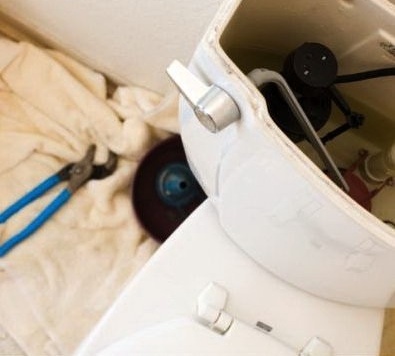Why does the toilet bowl sweat and how can condensation be eliminated?

The condensation on the toilet tank puzzles many owners of comfortable housing. Due to the water droplets constantly draining from the surface of the drain tank, puddles are formed on the floor, which must be wiped in a timely manner. Otherwise, dampness will lead to mold and an unpleasant odor. Of course, you can adapt some capacity to collect water, and then do not forget to empty it from the contents in time. Many housewives do this, trying in this simple way to solve this problem. Men are trying to find out why the toilet bowl is sweating in order to eliminate the cause and forget about the problem forever. Are there effective ways to deal with condensation that periodically appears on the toilet bowl? Let's figure it out.
Causes of condensation on the drain tank:
- A high level of humidity in the bathroom and in the whole apartment. High humidity can be caused by a large number of indoor plants, drying a large amount of wet laundry, leaking pipes of a water supply or heating system and other factors.
- The continuous flow of cold water into the toilet bowl for a second due to malfunctioning valves, as a result of which the water does not have time to warm up to room temperature.
To understand why the toilet bowl is sweating, you need to recall a little school physics course. The contact of warm and moist air with cold surfaces inevitably leads to the appearance of droplets of water on them. So, you need to look for ways to drain the air, as well as increase the surface temperature of the drain tank.
Checking the condition of the ventilation holes
To reduce the level of humidity, it is necessary to adjust the ventilation of the bathroom. Each apartment has special ventilation “windows” that provide air circulation. In pursuit of the beauty of the interior, some tenants seal these holes with finishing materials, which, of course, is unacceptable.
To mask ventilation windows, you need to buy decorative grilles that are specifically designed for this purpose. They can be selected by color, and by shape, and by design design. Before installing decorative grilles, clean the ventilation ducts from debris.

Installing a fan that turns on when the light is lit will help partially solve the problem of condensation
Ventilation of air in the room can be organized even more efficiently if you connect a forced ventilation system. To calculate the power of the ventilation system, you need to contact specialists. After assessing the condition of the bathroom and the intensity of its operation, professionals will give recommendations on the choice of equipment.
Repair of faulty shutoff valves
If the mechanism of the drain device breaks, then the water in the toilet flows without stopping. This leads to a constant replenishment of the tank with cold water, which reduces the temperature of its surface.In this case, the condensation process is ongoing. The problem can be eliminated only during the repair of valves or its complete replacement. To carry out repairs on their own or to invite plumbers, each homeowner decides on his own, based on the financial capabilities of the family.
In addition to partially eliminating the condensate problem, repairing the tank drain mechanism will result in savings in water consumption. This is especially true for owners of those apartments in which metering devices are installed - water meters.
Double-walled drain tank
Manufacturers of modern toilets are aware of the problem of condensation and offer their own effective solution. The latest toilet models are available with an improved design of the drain tank, which does not allow them to “cry”.
In these models, an additional plastic container is inserted inside the tank, the walls of which do not touch the ceramic surface of the product. As a result, its temperature is always constant and equal to room temperature. This constructive solution allows you to solve the problem once and for all. However, for many buyers, these models are still unavailable at a cost that is several times higher than the price of conventional toilets.
Some amateur craftsmen try to isolate the walls of the tank from the effects of cold water with the help of heat-insulating materials, which are glued to them from the inside of the tank. However, this technology does not allow to completely solve the condensate problem.

Some amateur craftsmen try to deal with condensate on the tank by pasting its inner walls with insulating material
If you still can’t afford expensive “not crying” models, try installing forced ventilation. Even a simple fan, inserted into the ventilation window and turned on when lighting the light in the bathroom, will solve the problem of condensation on cold surfaces. If even after that the toilet bowl is sweating, then call specialists to install more powerful ventilation systems.




6 comments